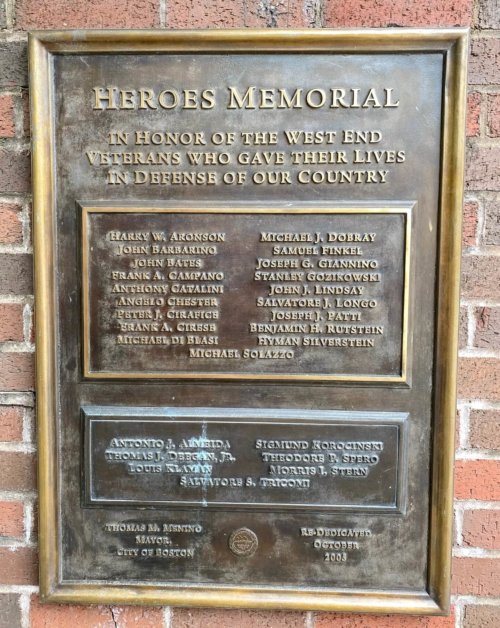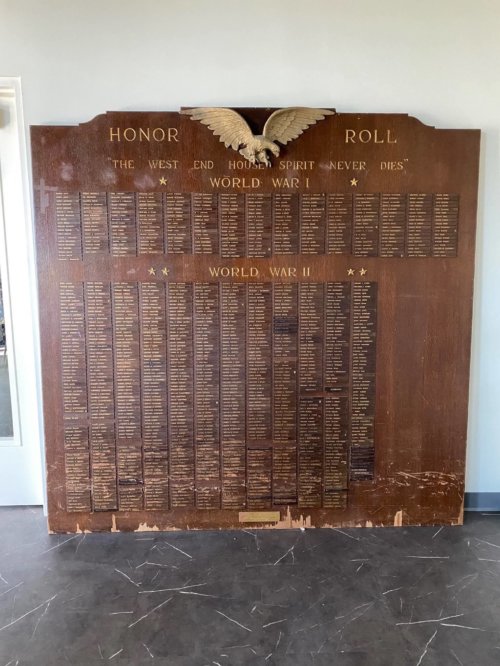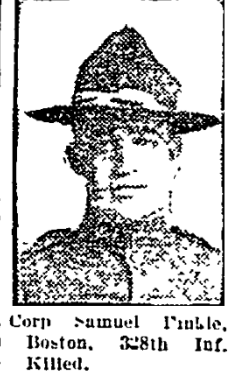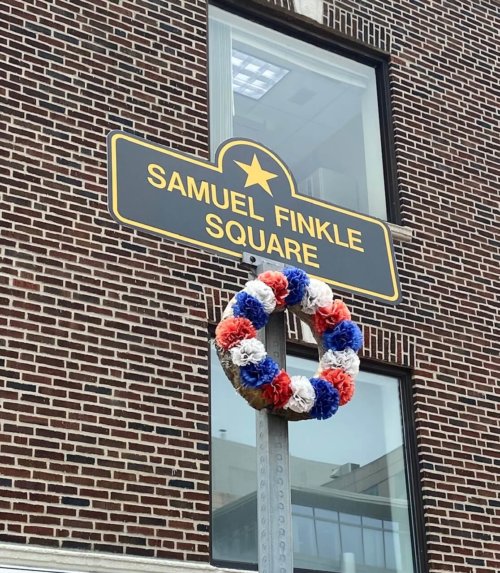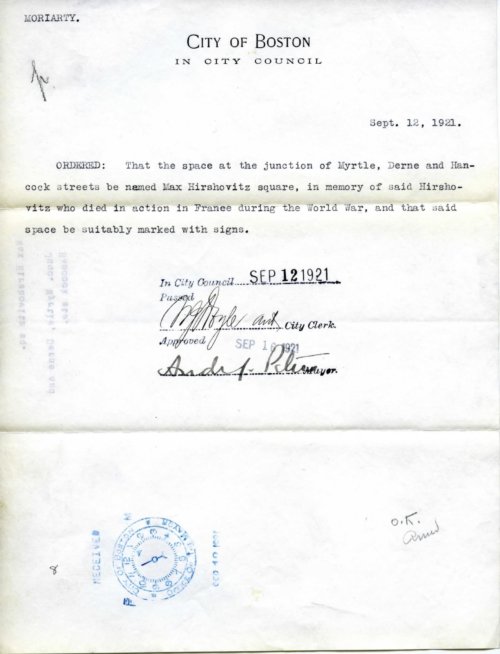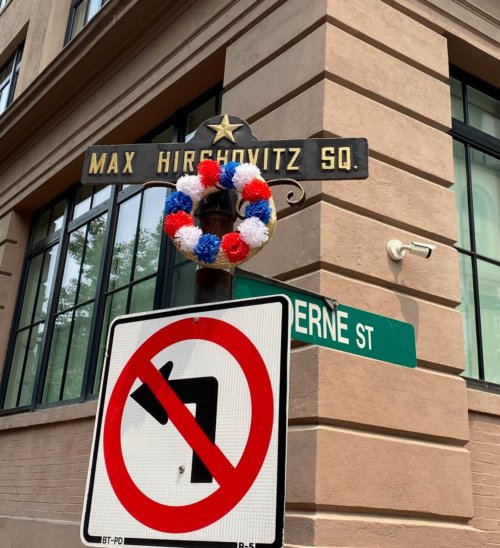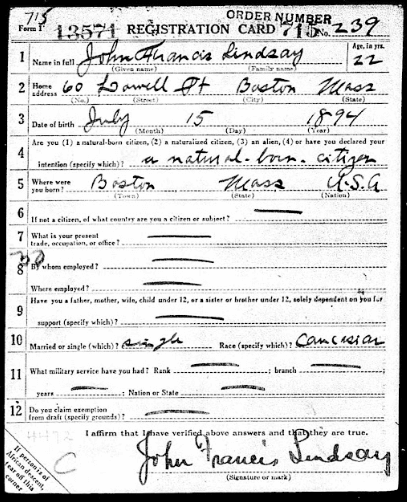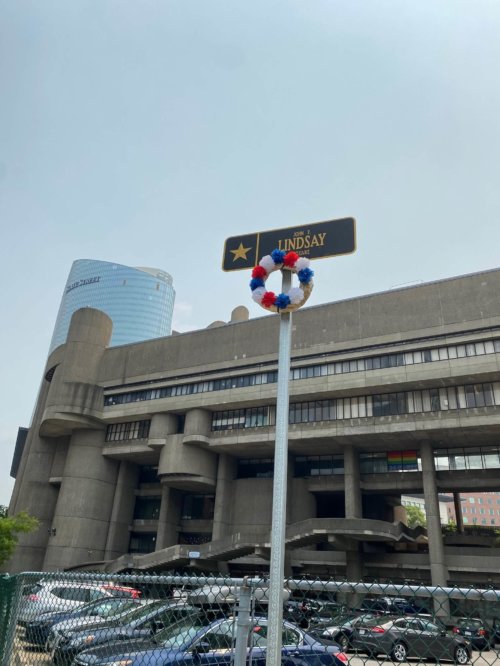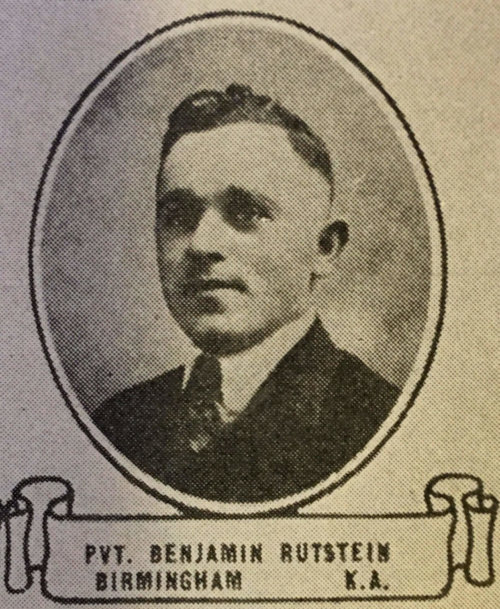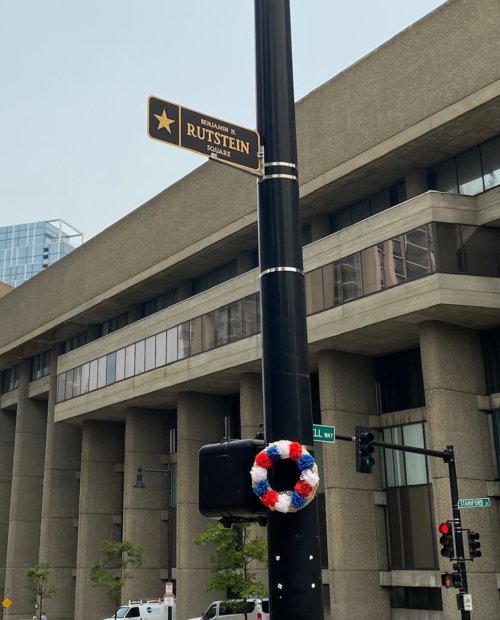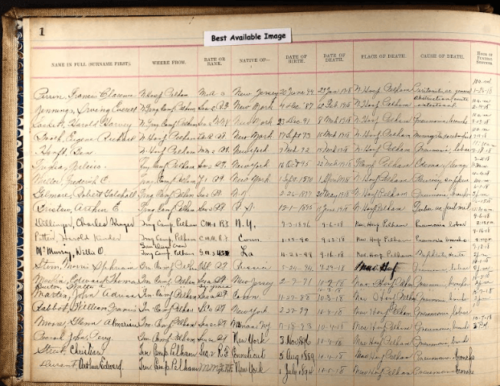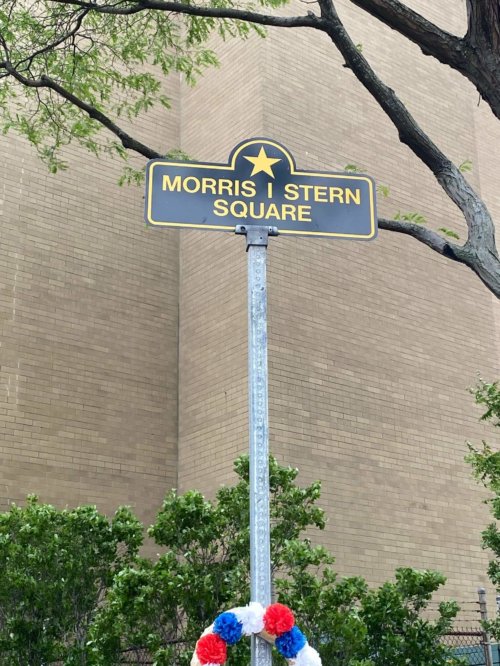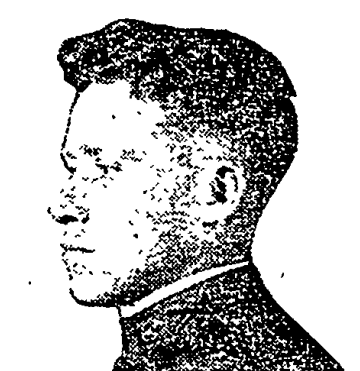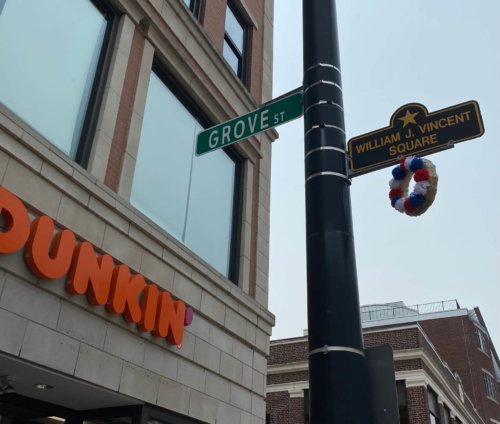West End Hero Squares, Part 1
The tradition of dedicating city squares to service members lost in war began in 1898. Known as Hero Squares, the City of Boston has placed over 1200 memorials of this type throughout its neighborhoods. Easily overlooked as one navigates busy urban streets, an alert pedestrian walking through the West End will notice its share of these memorials to those who sacrificed their lives in duty.
The Hero Squares in the West End honor fallen military members from WWI, WWII, and Korea. Because there is not enough space in one article to suitably discuss all of them, this will be a two part series, beginning with WWI. It is important to note that the City of Boston did not award all wartime fatalities with a Hero Squares, and the names of other fallen West Enders may be found on the Heroes Memorial on Staniford Street near the West End Place or on the West End House Honor Roll at The West End Museum.
Samuel Finkel Square: Junction of Cambridge and Joy Streets.
Born in Russia on November 3, 1896, Samuel Finkle lived at 59 Allen Street in the West End with his parents and siblings. In June 1917, at the age of 21, he registered for the draft while working as a clerk for the American Express Company. After training at Camp Gordon, GA., Cpl. Finkle sailed to France with the 328th Infantry Regiment on May 1, 1918. Five months later, during the Meuse-Argonne Offensive, Cpl. Finkle led his squad to set up an outpost. When German soldiers ambushed Finkle and his squad en route, he jumped between his men and the attackers, unloading his pistol as he fell from a bullet wound. An officer from his unit wrote to Finkle’s family that “his actions undoubtedly saved the lives of several others.” The Germans reportedly dragged Finkle away with them as they withdrew. The Army declared him missing and presumed dead. Ultimately, the Army recovered Cpl. Finkle’s body and returned him to the West End where he received a military funeral.
Max Hirshovitz Square: Junction of Derne, Hancock and Myrtle Streets.
Max Hirshovitz was born into a Jewish family in Russia in 1898 and emigrated with them to the United States in 1904. Hirshovitz and his family eventually settled in Boston, living first at 45 Irving Street then at 47 Wall Street. In 1917, when he was eighteen, HIrshovitz applied for U.S. citizenship and enlisted in the U.S. Army. He deployed to France in 1918 with thousands of other troops of the 26th (“Yankee”) Division and would have been part of operations near Chateau-Thierry in the summer of 1918. The Army reported that Corporal Hirshovitz was killed in action by an enemy shell on July 23, 1918 near the French town of Trugny. He was awarded a Purple Heart and brought back home to be buried at Montefiore Cemetery in Woburn, Massachusetts.
John F. Lindsay Square: Junction of Causeway St., Merrimac St., and Staniford St.
According to his 1917 draft card, John Francis Lindsay was a “natural born citizen” who lived with his family at 60 Lowell Street in the West End. After enlisting for the war, Private Lindsay became a waggoner (i.e. wagon driver) and deployed to France, with the 101st Regiment of the 26th Infantry Division. The Army reported that Private Lindsay was injured in two gas attacks, most likely while in the trenches near Saint-Mihiel, France. He died of his wounds on June 25th 1918.
Benjamin H Rutstein Square: Junction of Staniford St and William Cardinal O'connell Way
Benjamin Rutstein was born on July 15, 1895 in the West End to Harris and Esther Rutstein, Jewish immigrants from Russia. The Rutstein’s lived at 23 Lowell Street, just down the block from John Lindsay, and during his childhood Rutstein belonged to the West End House. When he registered for the draft at the age of 22, Rutstein worked as a traveling salesperson for the Goodyear Rubber Company of Birmingham, Alabama. Records show he was also married at the time to Esther Wilson, whom he wedded in Dallas, Alabama. Private Rutstein deployed to France with the 167th Infantry Regiment of the Alabama National Guard (attached to the 42nd Division out of New York). There is little in the record explaining Private Rutstein’s death in France on July 15, 1918, other than that he succumbed to injuries. It is possible his death was related to one of many gas attacks German troops conducted against the 42nd Division at the time of his death. Private Rutstein lies in rest at the Meuse-Argonne American Cemetery, Romagne, France, and his name is displayed on the West End House Honor Roll.
Morris I. Stern Square: Junction of Amy Ct. and Martha Rd.
Morris Stern was born in Moscow, Russia in 1894. In 1910 he lived on Leverett Street, and later moved to Auburn Street, where he and his family lived during WWI. He was a graduate of Harvard College (1914) and Harvard Law School (1916). Stern entered the Navy in 1917 and served as a Chief Storekeeper at Training Camp Pelham, NY, where he attained the rank of Chief Petty Officer. Tragically for CPO Stern, and for millions of others before the discovery of antibiotics, he contracted pneumonia and died at the Naval Hospital at Pelham Bay Park, NY on September 29, 1918. On the same day the Navy reported CPO Stern’s death to his family, they received notice that he was admitted to the Massachusetts Bar. Though not killed by enemy fire, the City of Boston awarded CPO Stern a Hero Square for losing his life during his wartime service.
William J. Vincent Square: Junction of Cambridge and North Grove Streets.
William Vincent was born in 1892 to parents of Canadian and English descent and lived on Chambers Street in the West End. Unlike the others mentioned here, 1LT Vincent was an officer and career military person. He began his service with the U.S. Army Cavalry in 1913 and served under General Pershing in Mexico for almost a year. During WWI, 1LT Vincent performed his duties as cavalry instructor at Camp Harry J. Jones in Douglas, Arizona. Like CPO Stern, 1LT was struck down with pneumonia and died of his illness on December 2, 1918. His funeral mass was said at St. Joseph’s Church in the West End and he lies in rest at Saint Joseph’s Cemetery in West Roxbury.
Article by Bob Potenza, edited by Sebastian Belfanti
Sources: https://www.boston.gov/departments/veterans-services/hero-squares-veterans; City of Boston Archives; Ancestry.com; koreanwar.org; honorstates.org; The Boston Globe; wikipedia; findagrave.com.


